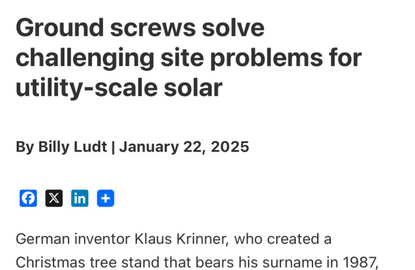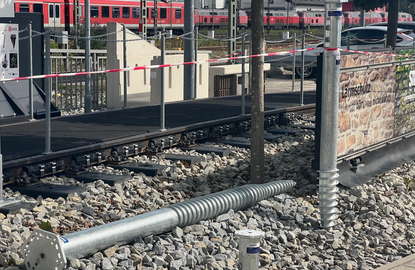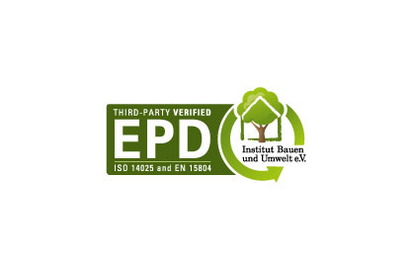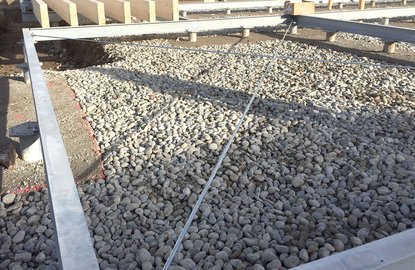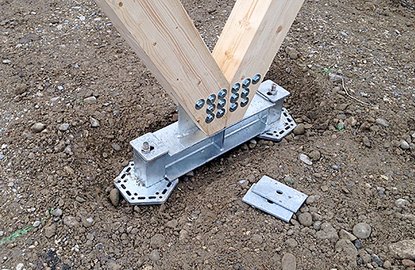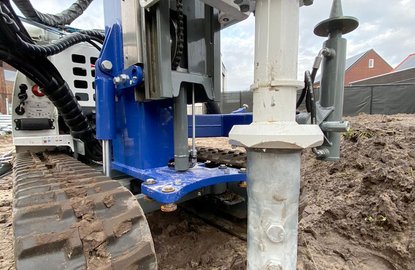Sustainable construction with ground screws
Sustainable construction with ground screws
The basic principles of sustainable construction
The term sustainability should be understood as an umbrella term for a way of acting that aims to promote a conscious handling and use of resources and to protect the environment whilst making it possible for future generations to have the same opportunities in life as we have had. This view is particularly important in the construction sector, which relies heavily on natural resources – and not just ecological natural resources.
Under the basic principle of sustainable construction, which is regulated in Europe with the standard ISO 15634, you can understand the construction of a structure or building under the equal consideration of ecological, socio-cultural and economic aspects. This means that the entire life cycle of a building, from the planning, to the use, dismantling and ultimately the disposal is taken into account. The German standard DIN EN 15634 regulates the evaluation of buildings on this basis and additionally includes the technical quality, process quality and site characteristics. This means that, buildings can be evaluated and praised from a sustainability point of view according to clearly defined criteria. Buildings can be certified in Germany by the DGNB (German Association for Sustainable Construction), and other bodies.
Sustainability is about more than just ecology
With the ecological side of sustainability, it’s primarily about the protection of natural resources and the ecosystem – both globally and locally. This could involve the optimised use of construction materials, for example, the use of energy sources or land use. In addition, the energy flows during the manufacturing of construction products and during the use of the building across its entire life cycle are taken into consideration. Thus, transport routes, installation and dismantling are also considered.
The reduction of the life cycle costs is the central aim of the economical perspective of sustainability. It’s about using the resources in the most economic way possible during the erection and use of the structure, therefore ensuring it’s value stability. This can actually be achieved through a strategic planning which includes the use of sustainable construction products and materials, for example.
The focal point of the socio-cultural dimension of sustainability lies in the protection of the social needs of individuals and on the protection of the cultural values of a society. With regard to sustainable construction, this aspect mainly focuses on the functionality of the structure as well as guaranteeing the health, safety and comfort of the individual using the structure and the protection of design and urban development quality.
All three dimensions are an equally important criterion when it comes to the planning and construction of a structure. This also includes the choice of construction products and materials which must, of course, satisfy the same requirements.
Sustainability starts with the foundations
When choosing sustainable construction products, it’s best to start with the foundations and to select a solution that’s in keeping with the philosophy of sustainable construction. In all respects, ground screws are a sustainable and innovative alternative with lots of advantages over traditional concrete foundations.
Ground screws are displacement piles made from galvanised steel which are driven into the ground with the help of special ground screw drivers to be used as point foundations. The screws get their stability from the surface friction on the shaft of the pipe and the interaction with the ground around the threaded portion. There is no need for excavation work.
With its unique advantages, the product meets the criteria of the three dimensions of sustainability.
Ecological:
Ground screws prevent large-scale soil sealing and don’t disturb the soil’s ecosystem. This applies for the entire life cycle of the structure, as after the foundations have been dismantled the construction site can be returned to almost the same state that it was found in. In addition, the soil is barely damaged during the installation work thanks to the light but powerful ground screw drivers. In any case, there is no need to move any soil with this system.
Economic:
Using ground screws has many economical advantages. By avoiding soil sealing, rainwater that falls on the construction side can be drained away under the house directly. It therefore doesn’t need to be taken away by a drainage system which saves money. When looking at the entire life cycle of the building, you can already plan the corresponding costs for dismantling and then compensate a part of these costs by gaining some revenue from recycling the galvanised steel for the screws and possibly used trusses. In addition, trusses, and under certain circumstances the ground screws too, can be used again in other construction projects.
Socio-cultural:
With ground screws, you are relying on one of the oldest types of foundation known to man, which underlines the cultural value of our ground screws. However, the biggest advantage of this particular foundation solution is its functionality. Thanks to the gentle and fast dismantling of the foundations, buildings can be adjusted to the living situation of the inhabitant at any time. This is a convincing argument for temporary construction or container construction.
Summary
Ground screws are a sustainable alternative to classic concrete foundations and they meet the criteria for the basic principles of sustainable construction. As a leading provider of ground screws, KRINNER has a wide range of ground screws and suitable ground screw drivers for a variety of different applications, from terrace and fence system construction, to pavilion and carport construction and even residential building construction.





